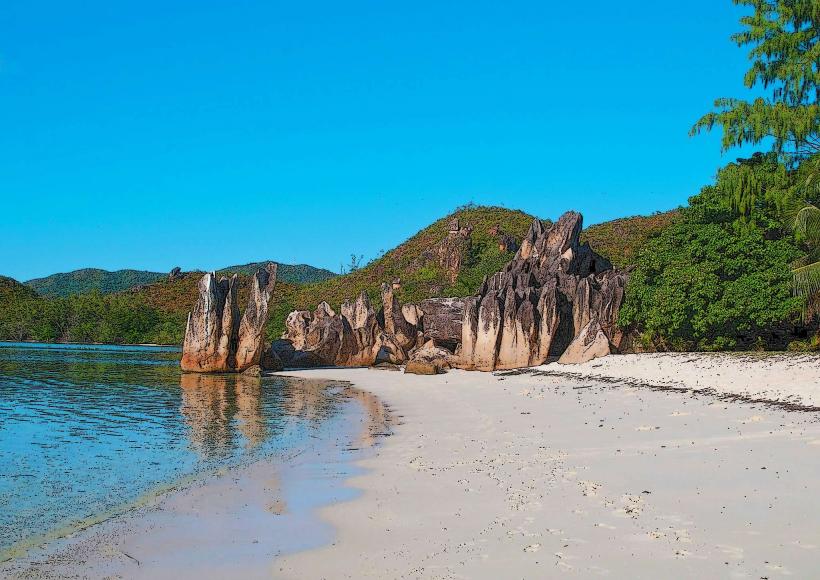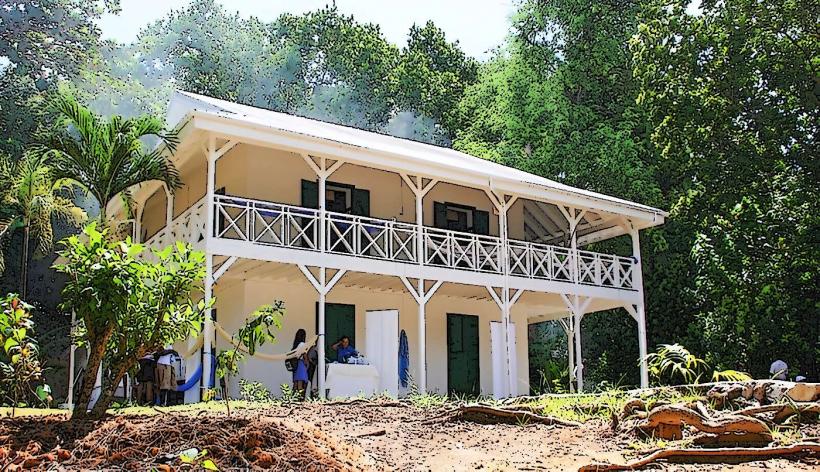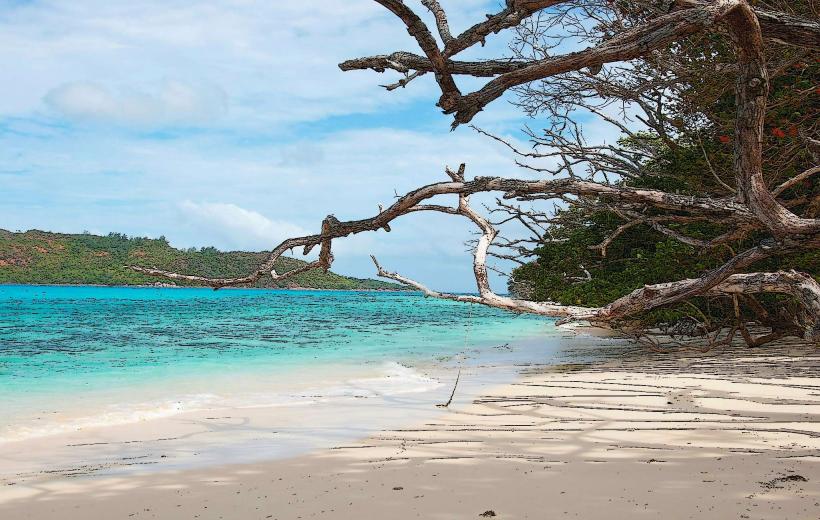Information
Landmark: Aldabra Giant TortoisesCity: Curieuse Island
Country: Seychelles
Continent: Africa
Aldabra Turtles, or Aldabra giant tortoises (Aldabrachelys gigantea), are one of the most iconic and largest species of tortoises in the world. They are native to the Aldabra Atoll in the Seychelles, a UNESCO World Heritage Site in the Indian Ocean, and are known for their remarkable size, longevity, and distinctive appearance. Here’s a detailed look at these fascinating creatures:
1. Physical Characteristics:
- Size: Aldabra tortoises are the second-largest species of tortoises, after the Galápagos giant tortoise. They can grow up to 1.2 meters (4 feet) in length and weigh between 250 to 300 kg (550 to 660 lbs). Some individuals can even exceed 400 kg (880 lbs).
- Shell: Their most distinctive feature is their large, dome-shaped carapace (shell). The shell color ranges from dark brown to greyish-brown, and it is thick and tough, providing protection from predators.
- Lifespan: Aldabra tortoises are known for their longevity, often living for more than 100 years, and some individuals are believed to live up to 150 years. This makes them one of the longest-living land animals.
- Sexual Dimorphism: Males are typically larger than females and have a longer tail, which is often more noticeable due to their larger, more curved shells.
2. Habitat:
- Aldabra tortoises are native to the Aldabra Atoll, which is part of the Seychelles Islands in the Indian Ocean. The atoll consists of four main islands: Aldabra, Picard, Malabar, and Polymnie, and is located about 700 km (430 miles) from the main islands of the Seychelles.
- The atoll is known for its tropical climate, with a mix of savanna, shrubland, and coastal habitats, which provide ideal conditions for the tortoises. The islands also feature areas with salt marshes, mangrove forests, and coral reefs, which offer abundant food sources for the tortoises.
3. Diet:
- Aldabra tortoises are herbivorous and primarily feed on grasses, leaves, fruits, and cactus. They have a diverse diet, and they also consume flowers and woody plants when available.
- They are known to eat large quantities of vegetation, which helps maintain the ecosystem balance by preventing overgrowth of plants and promoting biodiversity.
4. Behavior and Movement:
- Aldabra tortoises are slow-moving animals, often traveling at a pace of around 0.3 km/h (0.2 mph). They spend much of their time grazing and resting under trees or in shaded areas.
- Despite their slow movement, these tortoises can cover considerable distances within their territory in search of food or mates. They can travel long distances across the islands during the breeding season.
- These tortoises are primarily terrestrial, though they can swim short distances, especially in the shallows of lagoons or coastal areas.
5. Reproduction:
- The breeding season for Aldabra tortoises typically occurs during the wet season, between November and February, although some tortoises may mate year-round.
- Mating occurs on land, where males engage in a behavior known as courtship, which involves the male making low, rhythmic sounds and pursuing females. Males may also compete with each other for access to females.
- Females lay between 10 to 25 eggs per clutch, typically in a shallow nest dug into sandy or soft soil. After about 3 to 4 months, the eggs hatch, and the young tortoises emerge. Hatchlings are vulnerable to predators, but once they reach a certain size, they become more resilient.
- The tortoises’ reproductive rate is relatively low, with long intervals between egg-laying. Females generally breed only every 2 to 4 years.
6. Conservation Status:
- Endangered: The Aldabra giant tortoise is listed as vulnerable on the International Union for Conservation of Nature (IUCN) Red List. While they are not critically endangered, their population has been historically threatened by human activities, including habitat destruction, overhunting, and the introduction of invasive species such as rats, which prey on eggs and hatchlings.
- Conservation Efforts: The Aldabra Atoll has been largely protected since the early 20th century. Seychelles has taken several measures to conserve the Aldabra tortoise population, including habitat restoration and the establishment of the Aldabra Marine National Park.
- Additionally, the Giant Tortoise Breeding Centers on islands like La Digue and Curieuse Island in the Seychelles also play a crucial role in breeding programs, with the aim of reintroducing tortoises to other suitable islands within the Seychelles.
7. Cultural and Ecological Importance:
- Aldabra tortoises play a crucial role in the ecosystem of the Aldabra Atoll by controlling vegetation growth, which benefits the overall biodiversity of the islands.
- They are a cultural symbol of the Seychelles, representing both the natural beauty and the rich wildlife heritage of the islands. They have also become an iconic species for wildlife enthusiasts and conservationists.
8. Tourism and Observation:
- Visitors to the Aldabra Atoll can view these giant tortoises in their natural habitat, where they roam freely. The atoll’s remoteness has helped preserve their population, as human development has not encroached significantly on their habitat.
- The Seychelles also offers tours and educational programs about Aldabra tortoises, including visits to the Giant Tortoise Breeding Centers on La Digue and Curieuse Island, where people can learn about the ongoing efforts to protect and conserve the species.
Conclusion:
The Aldabra giant tortoise is a remarkable and iconic species that plays an important role in the biodiversity and natural heritage of the Seychelles. Their conservation is crucial not only for maintaining the health of the ecosystems in which they live but also for preserving a species that has existed for millions of years. With ongoing conservation efforts and sustainable tourism, the future of the Aldabra tortoise appears to be on a positive trajectory, ensuring that this magnificent species continues to thrive in the wild.




